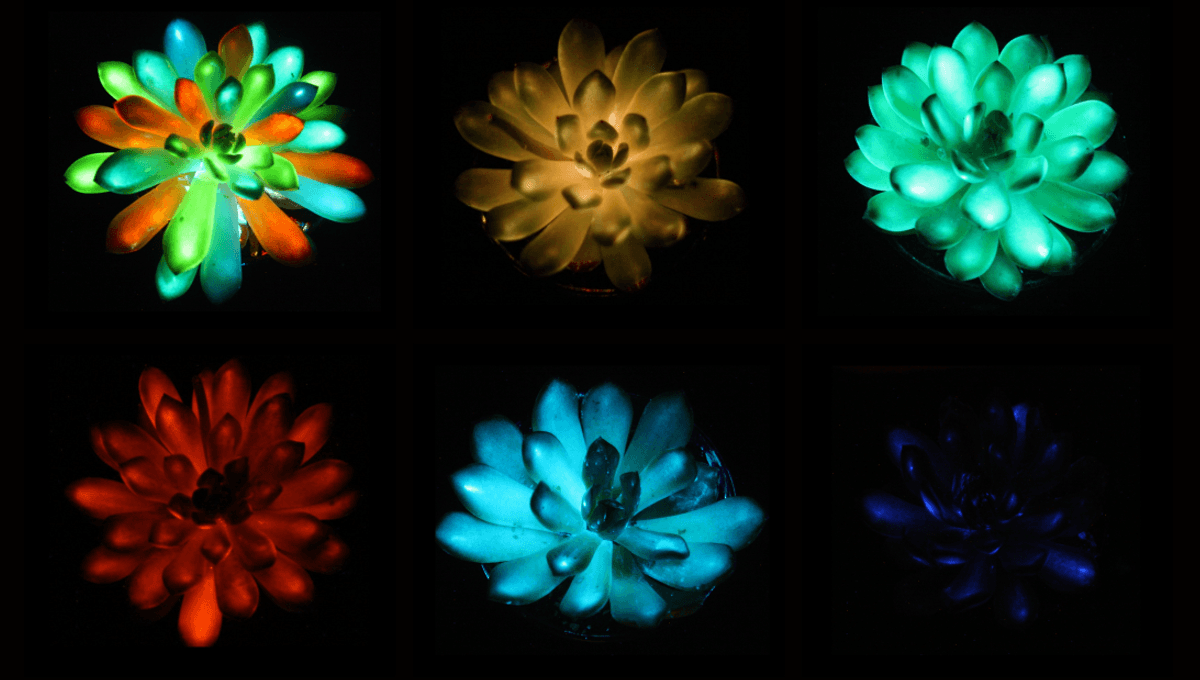
Scientists toying with the afterglow of phosphor particles were stunned to see how uniformly they could diffuse across succulent plants when injected into their leaves. The result is a succulent that glows like something out of Avatar, lasting for hours.
The rest of this article is behind a paywall. Please sign in or subscribe to access the full content.
When asked if the result was surprising, first author Shuting Liu of South China Agricultural University told IFLScience: “Yes – very. Prior studies show that plant tissues severely restrict particle transport; even nanoparticles are difficult to transport in plants rapidly and in large quantities. So, observing micron-sized afterglow particles move rapidly and distribute uniformly within succulent leaves (e.g., Echeveria ‘Mebina’) was unexpected – a new phenomenon.”
The glow-in-the-dark succulents can even recharge in sunlight. So, how does one make such an alien-like lampshade? It involves injecting synthetic light-emitting compounds known as afterglow phosphor particles. You’ll find them in toys like those stars you stick on the ceiling – that’s right, the ones that recharge in the light and then release it slowly as you drift off.
To get those phosphorescent particles to travel through the leaf tissues, they had to make them mini enough to fit, which meant shrinking them down to about half the width of a red blood cell. Getting the balance right took time as smaller particles diffused better, but then the glow wasn’t so bright. Making them too big, on the other hand, meant they couldn’t travel far enough to diffuse across the whole leaf.
Eventually they hit that Goldilocks happy medium, creating a supplemented succulent that could glow with a brightness comparable to a night light for about 2 hours after just a couple of minutes’ light exposure. For the team, the results were astonishing.
If proven safe, we’d begin with display pieces and small, solar‑rechargeable night‑lights that are visually engaging and calming.
Shuting Liu
“It was really unexpected,” said Liu in a statement. “The particles diffused in just seconds, and the entire succulent leaf glowed.”
While glowing plants have been achieved before, this was done through genetic engineering and created plants that only shone very faintly and in green. Step aside, say these flashy succulents, which come in a range of very bright colors including red, blue, green, and orange.
There still needs to be some testing done to see how the plants respond to the treatment after long-term exposure, but the team hopes their idea could grow into a simple, low-cost method for sustainable plant-based lighting systems.
“If proven safe, we’d begin with display pieces and small, solar‑rechargeable night‑lights that are visually engaging and calming,” Liu told IFLScience. “Broader applications will require higher brightness and longer afterglow.”
The study is published in the journal Matter.
Source Link: “It Was Really Unexpected”: Scientists Stunned By Glowing Plants, And All It Takes Is An Injection